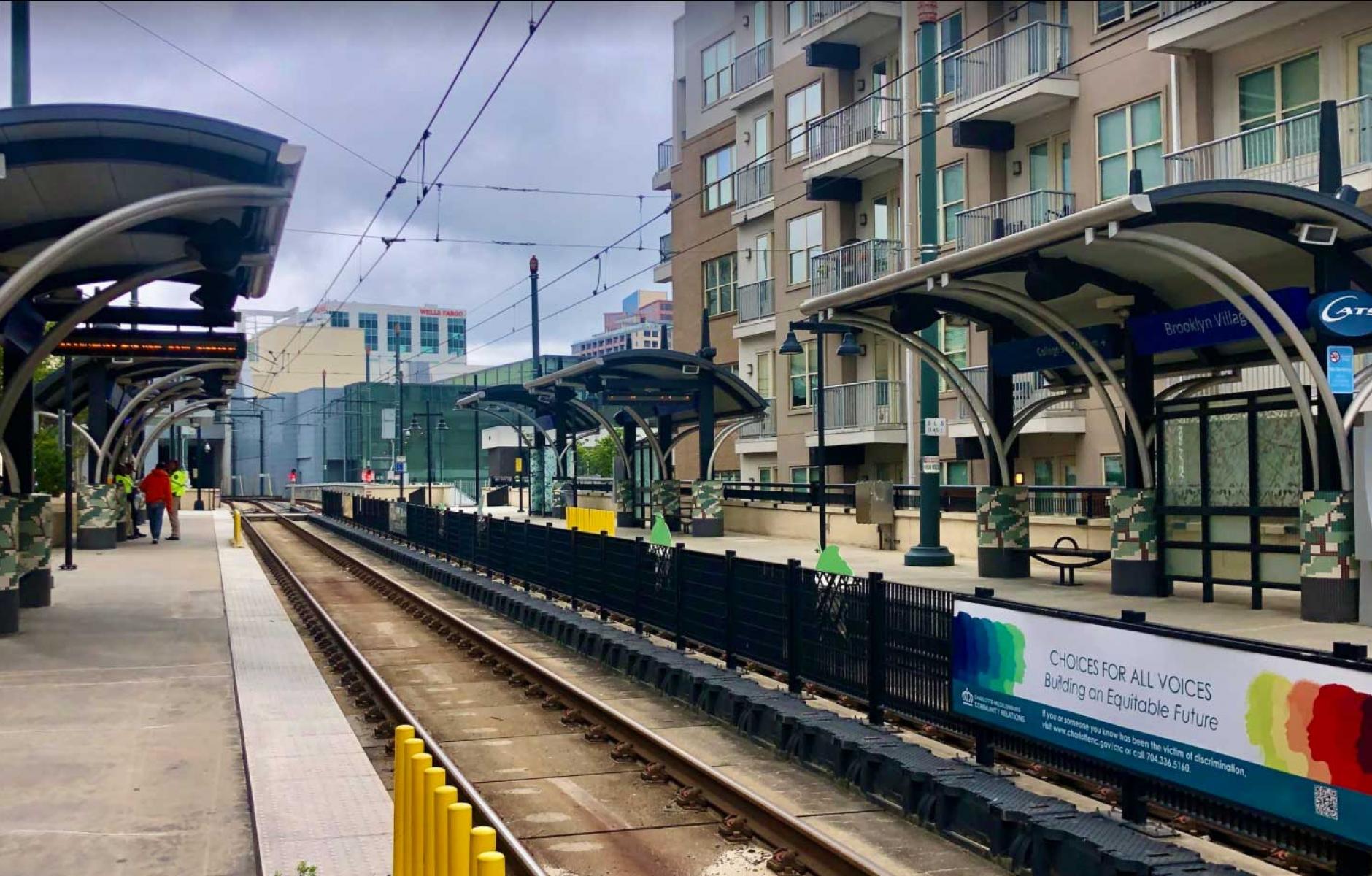
Learning from Charlotte’s light rail system
For my recent trip to Charlotte to attend the Strong Towns and Congress for New Urbanism convenings I had planned on staying at an AirBnB in Uptown/Downtown. However, the day before I was to leave, AirBnB canceled on me. Because of this late notice I knew accommodations would be expensive in Uptown.
Frantically I decided to book a hotel/motel along Charlotte’s Lynx Blue Line light rail not knowing what to expect. At least, however, I would have access to reliable public transit to the venues.
I began my search looking north on the rail line for accommodations, but it was a bit too far, so I looked south along the rail line. I found a Best Western a five minute walk from the Woodlawn Rail Station. I have never been to this area of Charlotte, so I did not know what to expect but it was affordable.
Wow, was I pleasantly surprised with Charlotte's light rail system.

For years I worked on advocating, planning, and riding LA’s light rail lines. Charlotte is next level in light rail planning and design. Here’s why.
I rode the bus from the airport to the Westin Hotel in Uptown (downtown) Charlotte to register for the conference. Once I registered, I headed to my hotel by light rail. Someone said I could step on the light rail from the hotel. So I followed the signs in the back of the hotel and viola. I walked a few feet to the Brooklyn Village Station. I did not have to cross a street to get there!
The Brooklyn Village station is clean, quiet, and there were no homeless or drug users there so I could relax and take in the great weather. The station is elevated about the street away from cars. On the other side of the station platform is an apartment building also built a few feet away from the platform again not separated by a street. The lack of cars, and intimate space created by the buildings on either side of the station reminded me of the Budapest tram stations on the ring road where I lived.
The train arrived and I took it a few stations south. On my journey south I noticed people walking and cycling along the rail line on dedicated bike lanes and sidewalks. Where were the cars?
Along the rail line at each station were public spaces, retail, and housing (TODs) built a few steps away from the rail line, not wide roads to separate them from pedestrians/transit users. People were getting off on the rail line like the New York City subway going from one destination to the next. These new developments were nicely, subtly designed with an emphasis on the ground floor, retail pedestrian space. Unlike LA TOD’s that are designed like jazz hands, buildings where the emphasis is in the middle or top of the building de-emphasizing pedestrian access.
Once I arrived at Woodlawn station I exited it and had to cross a narrow street and parking lots to access my hotel. It felt like LA!
However I went back to uptown later on and went back to Woodlawn Station. When I was waiting for the train I heard birds chirping. There was a bird's nest in the tree planted on the platform next to me! How pleasant it is to hear birds and not the buzzing of cars. Woodland has some great trees planted on the station platform for shade and beauty which made waiting for the train pleasant.
For the next four days my life evolved, discovering Charlotte's Light Rail station visiting friends, shopping, and eating. The station runs right through the convention and there is plenty of public art to enjoy. It gave me hope on how we can retrofit light rail stations.

The Charlotte rail line stations focus on the pedestrian sensory, and land use experience, which is the opposite of what LA does. LA designs and builds the lines and stations to get people out of cars. The stations are usually located to prioritize car accessibility by placing them in the middle of freeways or wide streets, which are further widened by the Los Angeles Department of Transportation. LA Metro likes to build parking lots adjacent to the stations. Therefore to access LA Metro light rail stations a pedestrian has to cross busy, dangerous streets and/or walk through parking lots. Most of the stations are located on busy noisy streets and some even on freeways. The noise is assault to the human ears.
The Charlotte light rail system integrates people, mobility, art, and sensory details with hints of nature. This made me realize that in LA we have it all wrong and punish our transit riders.




